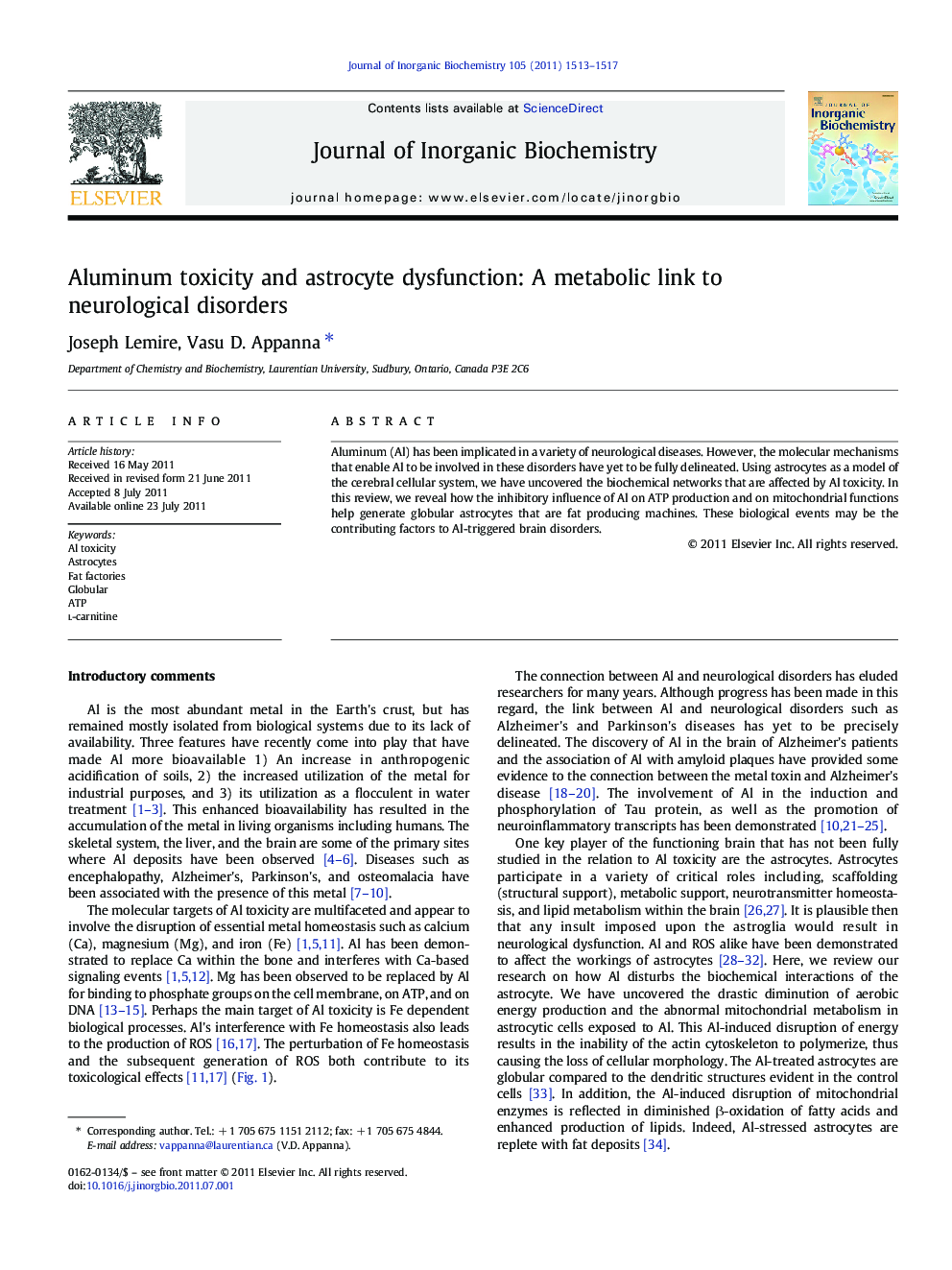| Article ID | Journal | Published Year | Pages | File Type |
|---|---|---|---|---|
| 1316000 | Journal of Inorganic Biochemistry | 2011 | 5 Pages |
Aluminum (Al) has been implicated in a variety of neurological diseases. However, the molecular mechanisms that enable Al to be involved in these disorders have yet to be fully delineated. Using astrocytes as a model of the cerebral cellular system, we have uncovered the biochemical networks that are affected by Al toxicity. In this review, we reveal how the inhibitory influence of Al on ATP production and on mitochondrial functions help generate globular astrocytes that are fat producing machines. These biological events may be the contributing factors to Al-triggered brain disorders.
Graphical abstractA definitive link between aluminum and neurological disorders remains elusive. Here we describe a metabolic link where by aluminum-stressed astrocytes experience mitochondrial dysfunction and lack of oxidative energy production. This results in a loss of cellular morphology and an accumulation of lipids. Both factors which could contribute to Al-induced neurological disorders.Figure optionsDownload full-size imageDownload as PowerPoint slide
